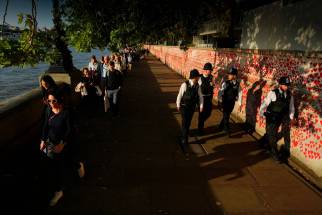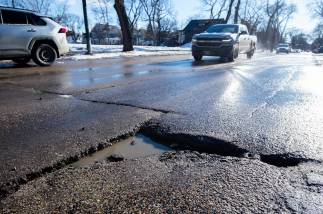Kilometres-long Queue to see queen contrast in national grief
Read this article for free:
or
Already have an account? Log in here »
To continue reading, please subscribe:
Monthly Digital Subscription
$0 for the first 4 weeks*
- Enjoy unlimited reading on winnipegfreepress.com
- Read the E-Edition, our digital replica newspaper
- Access News Break, our award-winning app
- Play interactive puzzles
*No charge for 4 weeks then price increases to the regular rate of $19.00 plus GST every four weeks. Offer available to new and qualified returning subscribers only. Cancel any time.
Monthly Digital Subscription
$4.75/week*
- Enjoy unlimited reading on winnipegfreepress.com
- Read the E-Edition, our digital replica newspaper
- Access News Break, our award-winning app
- Play interactive puzzles
*Billed as $19 plus GST every four weeks. Cancel any time.
To continue reading, please subscribe:
Add Free Press access to your Brandon Sun subscription for only an additional
$1 for the first 4 weeks*
*Your next subscription payment will increase by $1.00 and you will be charged $16.99 plus GST for four weeks. After four weeks, your payment will increase to $23.99 plus GST every four weeks.
Read unlimited articles for free today:
or
Already have an account? Log in here »
Hey there, time traveller!
This article was published 15/09/2022 (1178 days ago), so information in it may no longer be current.
LONDON — These last days of the week are the breath caught, the pause, the interregnum of an exquisitely choreographed public grief.
They are the lull between the solemn royal procession that brought Queen Elizabeth’s casket from where it arrived in London, at Buckingham Palace, to where it now rests for the weekend at Westminster Hall.
And in this lull, with few formal events planned, the eyes of the nation turned towards “the Queue.”
The Queue — the scope of the thing demands the capital letter — is the official line to see the late queen’s casket as she lay in state. It opened Wednesday, and within hours had swelled to jaw-dropping proportions. It is difficult to estimate how many will pass through over these four days of the viewing, but it will be well into the hundreds of thousands.
DAVID JOSEK / THE ASSOCIATED PRESS People queue to pay their respects to late Queen Elizabeth II who’s body is lying in state at Westminster Hall in London.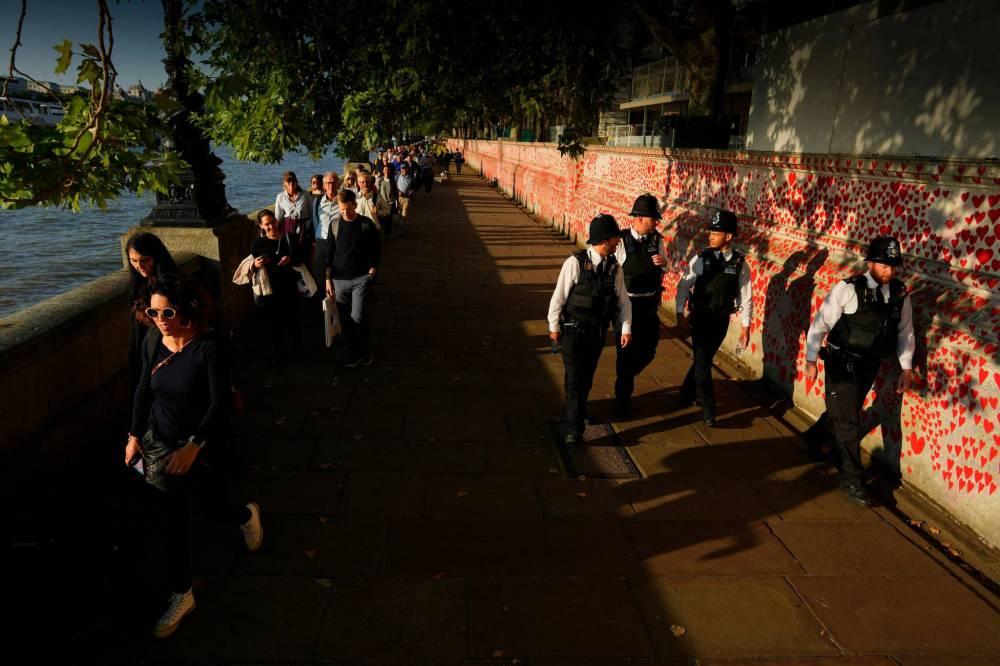
The Department for Digital, Culture, Media and Sport has maintained a live online tracker complete with a map, so aspiring Queue members could keep up with the location of its tail end. By noon Thursday, it had reached beyond the Tower Bridge, nearly 6.3 kilometres from Westminster Hall, and it was estimated to take at least 10 hours to complete it.
Those figures describe facts of the Queue. They do not describe the experience.
The Queue is like nothing before it, and quite likely nothing we will ever see after. It is a massive flow of human bodies — young and old, locals and tourists — shuffling through London in an amiable and unstopping march, gently marshalled by a small army of security guards.
The lineup passes by all the famous and less-famous sights London has to offer. It skirts the Thames River, snaking under the gazes of the Tower of London, Shakespeare’s Globe theatre and the London Eye. It passes by a skatepark, crêpe stands and patio bars; it passes by tacky gift shops, classy gift shops, incredibly expensive apartments and public housing.
Then, in the home stretch, directly across the glittering water from Westminster Palace and before it makes its final turn to cross Lambeth Bridge and approach the late queen’s resting hall, the Queue passes a striking wall. It’s 500 metres long and adorned with a sea of red hearts, as many as 150,000 in all. Each is hand-painted, and many bear a name.
KIRSTY WIGGLESWORTH / THE ASSOCIATED PRESS Volunteers work on the COVID-19 memorial wall in Westminster in London. Bereaved Families for Justice have been re-painting the faded hearts on the tribute and adding inscriptions for people who can not get to the wall.
This is the National COVID Memorial Wall, and since March 2021 it’s been a labour of love for the roughly 25 volunteers who maintain it. They’d first painted the hearts without permission, a cry of grief in a nation that, much like Canada, found little official appetite to publicly mourn the dead. St. Thomas’ Hospital, which owns the wall, wisely decided to leave it.
“The government narrative is ‘We just want to get past that awful time, it was so horrible,’” says Fran Hall, a volunteer with COVID-19 Bereaved Families for Justice, which created the wall alongside activism group Led By Donkeys. “Of course, people want to leave it behind them, but for us, we can’t leave it behind, because it’s present.
“There’s been no sense of national grief. There isn’t any kind of official mourning or any kind of public reflection of this scale of public loss that’s happened to us. So the wall does that for us.”
“There’s been no sense of national grief. There isn’t any kind of official mourning or any kind of public reflection of this scale of public loss that’s happened to us. So the wall does that for us.”–Fran Hall
Hall’s husband’s name is on the wall: Steve Mead. It’s on the first heart she drew.
They had married in September 2020; he died of COVID-19 just weeks later. As she struggled with her grief, maintaining the wall became like “ongoing therapy.” The volunteers that tend to it each week have become close friends, and they’ve made new connections.
“People will approach us, people will come to write on the wall who’ve got a heart that reflects someone they’ve lost,” she says. “So we interact with them. Many people weren’t able to have a public funeral or any kind of public reflection of their loss. So in a way, having someone’s name on that wall does something to replace that.
“It has different meaning for different people, but it’s very, very important.”
MELISSA MARTIN / WINNIPEG FREE PRESS Fran Hall, a volunteer with the National COVID Memorial Wall, walks in the unstopping six-kilometre queue to see Queen Elizabeth’s casket where it lies in state.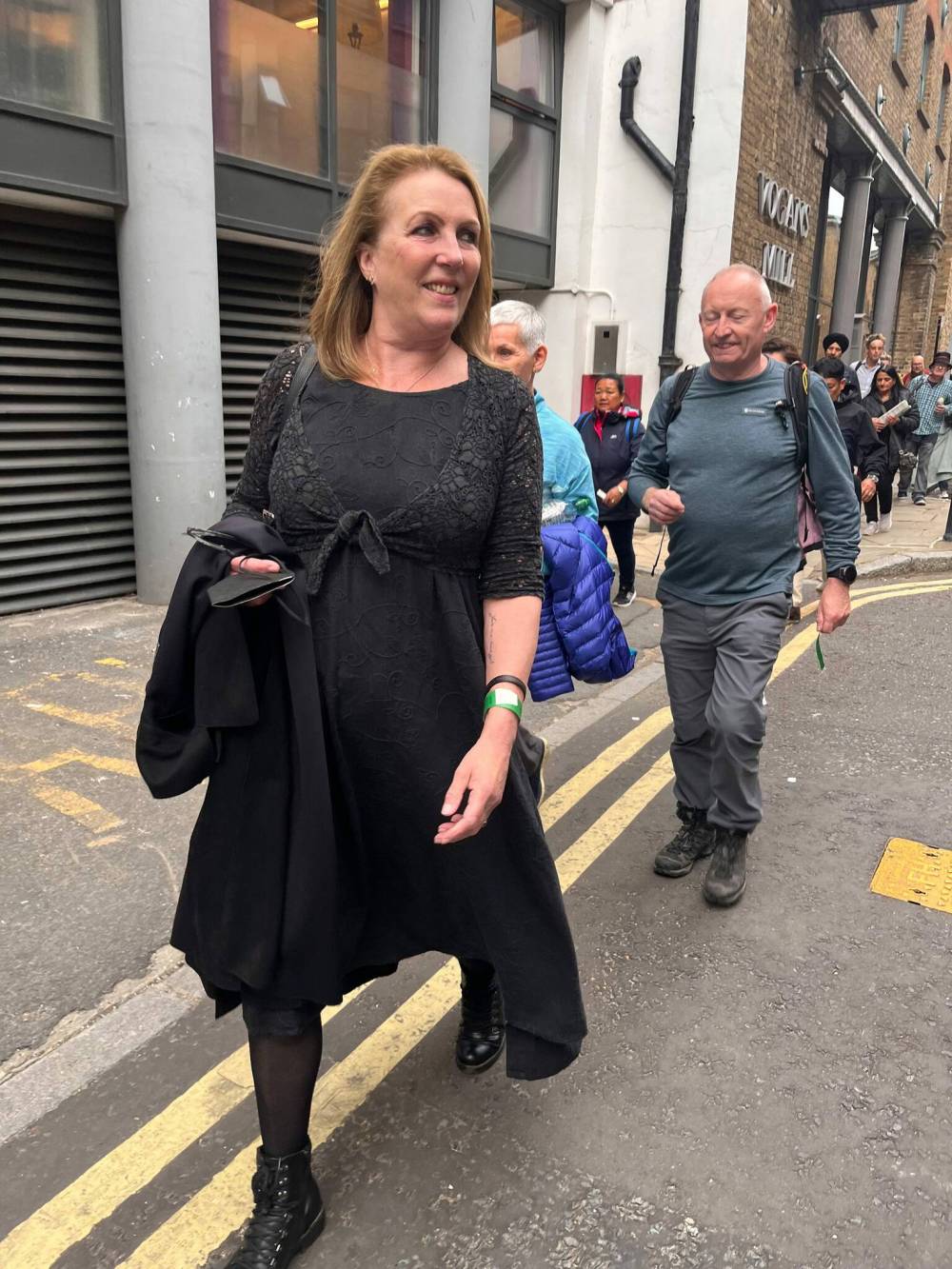
The Queue, though, has put a dent in that. While much of it mingles with regular pedestrian traffic, the part that passes by the memorial requires a Queue wristband to enter. This week, one woman planned to go with her mother to lay flowers at the wall for the first time; she’d lost her brother to COVID-19, and it was his birthday. Now, she can’t go.
So in a way, that’s another loss, Hall says. But something else also troubles the volunteers.
Since the Queue started, some of the journalists who flit about its margins have taken to leaning their camera gear or their bodies against the memorial wall, rubbing the paint and risking damage. Supporters asked reporters they saw to be more respectful; it’s not clear if the message spread.
In this way, the wall’s position at the Queue’s head poses a challenging question about how we mourn, how we remember, and how we forget. On one side of the Thames, hundreds of thousands of people publicly grieve one person; on the other, a memorial to hundreds of thousands of dead, including thousands for whom no-one was able to publicly grieve.
Hall has thought about that a lot, too, and not just as a widow. She’s also a funeral director and chief executive officer of the non-profit Good Funeral Guide, which aims to empower bereaved people. This gives her a unique personal and a professional view onto the importance of death rituals, and how the Queue’s impact on the wall echoes the insult of a government’s silence.
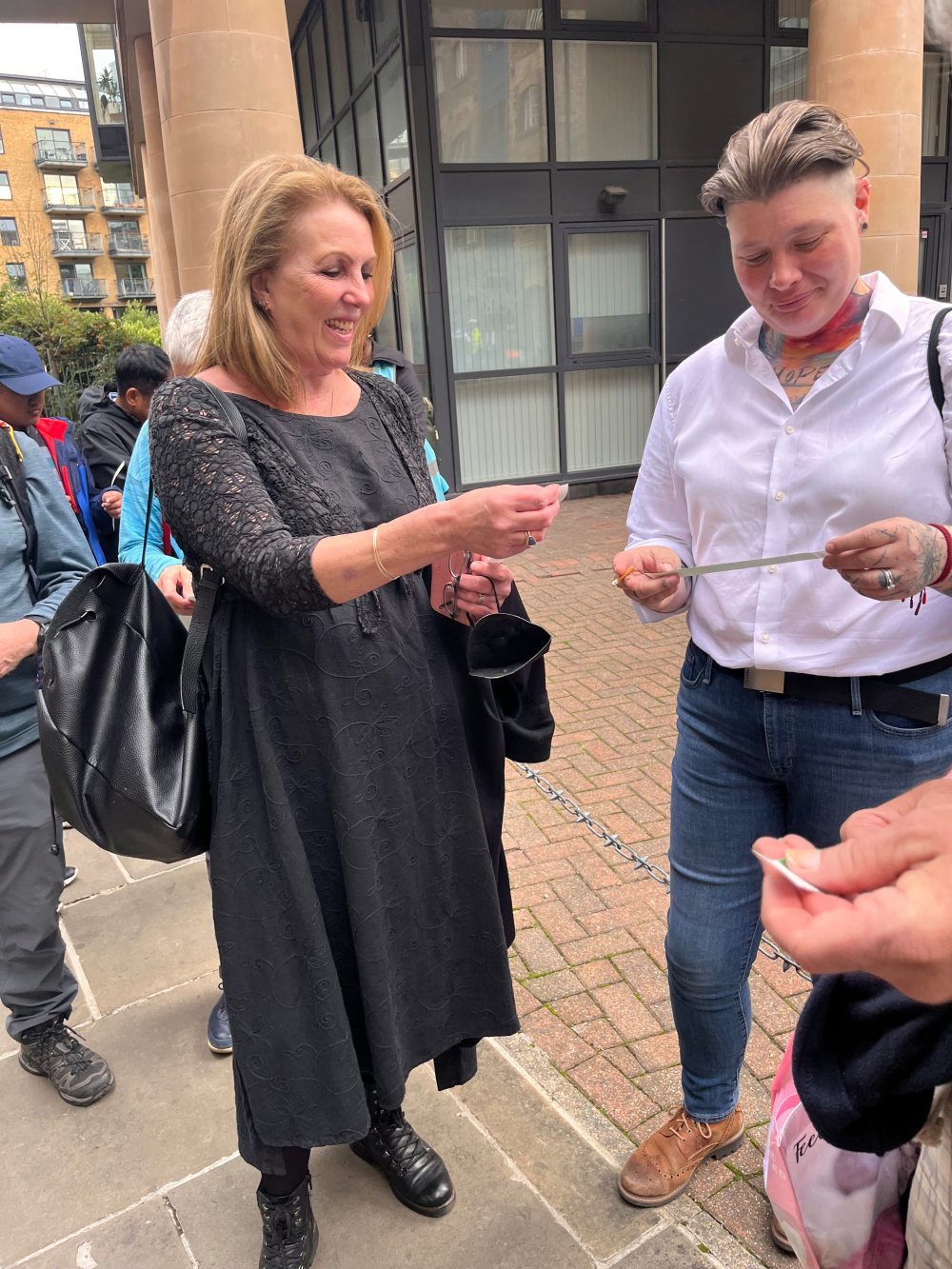
“I think we already feel excluded,” she says. “From the friends that I have, from the volunteers, from the messages that go back and forth, it’s, ‘How dare they do this to us.’ This just another denial.
“A lot of journalists just don’t realize what it is… It’s a real shame that there hasn’t been the emotional intelligence… to look at the complexity, and the juxtaposition of how these losses, and these people, to their families are equal to the loss to the Royal Family.”
That contrast is striking.
On Thursday, Hall herself chose to join the Queue.
We met at the Queue’s end an hour or so before dusk fell over London. We spoke as we walked, never stopping, swept up in the endless stream of people beginning what was expected to be at least a 10-hour slog towards the late queen’s casket. We talked about the memorial, the pandemic, grief and, of course, the Queue.
It just felt like she needed to be there, she says. She’s not a big fan of the Royal Family, but it’s history unfolding and there will never be another queen who lived the sort of life this one did. Her late husband was a London police officer, and he swore his allegiance to Queen Elizabeth.
“I think we already feel excluded… From the friends that I have, from the volunteers, from the messages that go back and forth, it’s, ‘How dare they do this to us.’ This just another denial.”–Fran Hall
He would have been in the Queue for sure, loudly making friends with everyone else in line and “probably annoying them,” Hall says with a laugh. So she’s there for him, for her children who can’t make it into London, and for posterity — as well as, to name what is almost certainly a common motivation in the line, “just to say we’ve done this mad queuing.”
Hall pauses for a second, peering at all the people ambling ahead. “Are we even in the queue?”
We are. A few minutes later a worker comes by to give us wristbands that will allow entry to Westminster Hall. (I won’t make it that far; writing calls.)
Before I leave the line, I wonder what it will feel like for Hall to pass by the COVID-19 memorial wall in this context — not as a volunteer freely coming to care for it but as one of a multitude participating in a more validated grief.
It’ll be the first time she’ll get to see the wall late at night, Hall says, so that’ll be nice. It’ll be the first time her friend Lucy, a fellow funeral director who cared for her husband’s body and has come to the Queue with her, will see the wall, and that’s also special. The wall is like a second home to her, Hall says.

All she hopes is, as hundreds of thousands of people and who-knows-how-many journalists pass by the memorial, they will take a moment to think about why some are grieved, and some are not. Why some losses are held up to public spectacle, while others, even if they are orders of magnitude greater, are swept under the rug.
“That’s not to take anything away from the fact that the nation has lost our monarch, our spiritual leader, the most powerful woman in the world and the most precious woman, to many,” Hall says, shuffling along. “But there’s a real dissonance for people that had been bereaved recently due to COVID. It’s like those lives didn’t matter and, of course, they did.”
She sighs.
“It’s complicated, it’s very complex,” she says, pausing. “Just like the reasons for people being in this queue.”
melissa.martin@freepress.mb.ca
Our newsroom depends on a growing audience of readers to power our journalism. If you are not a paid reader, please consider becoming a subscriber.
Our newsroom depends on its audience of readers to power our journalism. Thank you for your support.
History
Updated on Thursday, September 15, 2022 10:18 PM CDT: typo fixed










